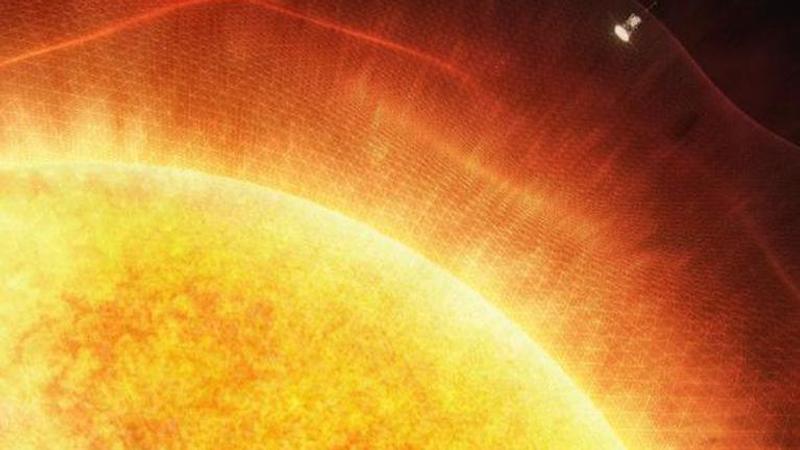Published 23:45 IST, January 28th 2023
As ISRO nears launch of Aditya-L1 mission, a look at what went into it and why it matters
ISRO is planning to launch Aditya-L1 solar observatory between June and July. This is India's maiden mission to study the sun and its effects on space weather.

The Indian Institute of Astrophysics (IIA) has handed over a crucial payload of the Aditya-L1 solar observatory to ISRO before the launch of India's first mission dedicated to studying the sun. Aditya-L1 has been years in the making owing to its complexity, scale and the quest for perfection that ISRO is known for. On January 26, the IIA handed over a payload named Visible Emission Line Coronagraph (VELC) ahead of the mission's launch which is anticipated between June or July this year from Sriharikota aboard the PSLV rocket.
ಭಾರತೀಯ ಖಗೋಳ ಭೌತಶಾಸ್ತ್ರ ಸಂಸ್ಥೆ ಅಭಿವೃದ್ಧಿ ಪಡಿಸಿರುವ ವಿಸಿಬಲ್ ಲೈನ್ ಎಮಿಷನ್ ಕರೋನಾಗ್ರಾಫ್ (ವಿ ಇ ಎಲ್ ಸಿ) - ಆದಿತ್ಯಾ ಎಲ್1 ನ ಚಿತ್ರಾವಳಿ. pic.twitter.com/9S9XEsYzxK
— PIB in Karnataka (@PIBBengaluru) January 26, 2023
About the Aditya L-1 mission
(Artist's representation of Aditya-L1 observatory; Image: ISRO)
The name Aditya which translates to 'the sun' was initially planned as a 400 kg class satellite with just one payload-- the VELC-- and was to be installed in a 800-km low earth orbit (LEO). Scientists in ISRO and their collaborators, however, decided to scale up the mission and it was upgraded with half-a-dozen more instruments. With a total of seven payloads, the mission will now be installed at the first Lagrange Point (L1) 15 lakh km from Earth and thus the name Aditya L-1.
(A map of five Lagrange points; Image: NASA)
Why the upgrade? This is because the Lagrange Point 1 (L1) offers the advantage of an obstructed view of the sun as it is right between the sun and the Earth. Moreover, the Lagrangian points are a favourite spot for scientists, especially for space-based observatories, because they are gravitationally stable locations, which means higher fuel efficiency which in turn increases the life-span of a spacecraft there.
Aditya-L1, the instruments and mission objectives
The solar observatory, India's first-ever, will carry a total of seven instruments each assigned a specific objective to unravel new secrets of the sun. The VELC, which weighs 90 kg, is the heaviest payload and it will be used to gather data on the sun's corona, the outermost layer of its blazing atmosphere. While the solar surface temperature is estimated to be around 6,000°C, the corona heats up to millions of degrees, and why this happens is a mystery to astronomers. This payload by the IIA might offer ISRO a breakthrough and solve this mystery, making India the first nation with answers to these questions.
(Aditya-L1 being assembled at ISRO's facility; Image: ISRO)
The complex project took engineers one-and-a-half decades to complete. "It has taken 15 years for VELC from concept to completion, and this period was needed for a complex system like this", ISRO chairman S Somanath said while elaborating the need to study the sun.
"Both imaging and spectroscopic observations obtained by VELC payload are key to study the diagnostic parameters of solar corona and dynamics as well as origin of the coronal mass ejections and magnetic field measurements of the solar corona," the IIA said in an official report.
Apart from the VELC, the other six instruments that were later added are Solar Ultraviolet Imaging Telescope, Aditya Solar Wind Particle Experiment, Plasma Analyser Package for Aditya, Solar Low Energy X-ray Spectrometer, High Energy L1 Orbiting X-ray Spectrometer, and Magnetometer. All of them will collectively observe the photosphere, chromosphere and the outermost layers of the sun to decode the solar activities and how they affect space weather.
Why does Aditya-L1 matter?
This mission, if successfully launched, will bring ISRO head-to-head with other space agencies that have already launched their solar missions and are trying to lift the veil of many mysteries that are yet to be explained. The US space agency NASA, for instance, has multiple missions dedicated to the sun, the Parker probe being one of them. It was recently hot in the headlines for becoming the first spacecraft to 'touch' the sun.
Launched on August 12, 2018, Parker has made several flybys near the sun and is collecting data on the corona and solar winds. NASA has another solar orbiter which it built in collaboration with the European Space Agency (ESA) and launched on February 20, 2020 to determine how the sun affects space weather.
(Artist's representation of the Parker probe; Image: NASA)
On September 23, 2006, NASA launched another solar observatory named 'Hinode' in partnership with the Japan Aerospace Exploration Agency (JAXA) to find out what powers the solar atmosphere and drives solar eruptions. Installed at an altitude of 650 km in a sun-synchronous orbit, the orbiter has instruments to measure the strength and direction of the sun's magnetic field on the sun's surface which is called the protosphere.
(Artist's representation of the NASA-ESA orbiter; Image: NASA)
China too is in the race as it successfully deployed its massive Advanced Space-based Solar Observatory (ASO-) on October 10, 2022. Nicknamed 'Kuafu-1', the Chinese observatory weighs 888 kg and is deployed at an altitude of 720 km in a sun-synchronous orbit and is designed to last at least four years. Despite numerous missions already scrutinising the sun, the fact that ISRO's Mangalyaan was the first to make new discoveries on Mars outracing wide range of other orbiters and rovers, shows Aditya-L1's promise.
Updated 23:45 IST, January 28th 2023








